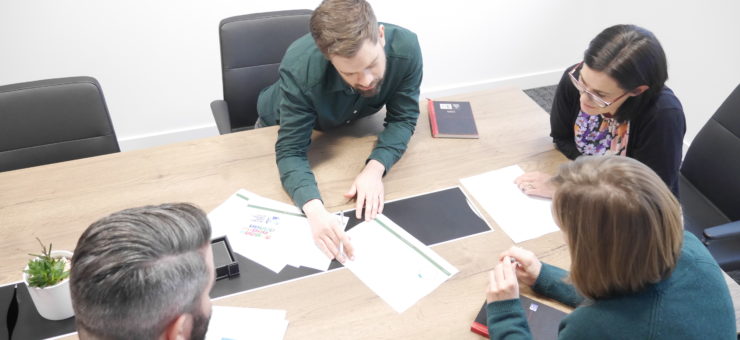Building the Right Team for Sustainable Medical Device Design
24 June 2024
In a recent panel discussion, our Material Scientist, Catriona Eldridge spoke about the importance of collaboration and team influence on designing medical devices with sustainability in mind. Here, we see how she has expanded a core theme from the panel.
In device engineering, sustainability isn’t just a buzzword—it’s a crucial component that dictates the success and future viability of designs. As we navigate the complexities of creating medical devices with a minimal environmental footprint, the question isn’t just about what we design, but who designs it. The right team, armed with a diverse range of skills and perspectives, can significantly elevate the sustainability of medical devices.
Beyond Traditional Engineering
Traditionally, engineering design has focused on functionality, cost, and performance. However, the modern engineering landscape demands a broader perspective—one that integrates environmental impact, resource efficiency, and lifecycle considerations into the very fabric of design processes. This shift requires a multidisciplinary approach, blending the expertise of engineers with insights from environmental scientists, material experts, and even human factors engineers.
The Ideal Sustainable Design Team
To create truly sustainable medical devices, you need a team that embodies diversity not just in skills but also in thinking. Here’s what such a team might look like:
- Environmental Engineers: These professionals can evaluate the environmental impact of materials and processes, ensuring that sustainability is considered from the ground up.
- Material Scientists: They bring knowledge about sustainable materials and alternatives to traditional options, helping to reduce the ecological footprint of products.
- Design Engineers: With a focus on both function and form, they ensure that sustainability doesn’t come at the cost of usability or aesthetic appeal.
- Life Cycle Assessment (LCA) Specialists: They analyse the environmental impact of a product throughout its entire lifecycle, from raw material extraction to end-of-life disposal.
- Supply Chain Experts: Sustainable design often hinges on a sustainable supply chain. These experts can navigate the complexities of sourcing materials and components in an environmentally responsible manner.
- Human factors: Understanding the human aspect—how people use and dispose of devices—is crucial for designing sustainable products that people will actually adopt and use correctly.
- Regulatory Specialists: Keeping abreast of evolving environmental regulations ensures that designs not only meet current standards but are also future-proofed against upcoming legislation.
Collaboration and Communication: The Glue of Sustainable Teams
Having the right people is just one part of the equation; how they work together is equally important. Open communication and collaboration are essential to integrate diverse perspectives into a cohesive design strategy. Regular interdisciplinary meetings, collaborative design sessions, and shared digital platforms can foster an environment where ideas flow freely and innovations emerge organically.
Sustainable design requires looking beyond the immediate project. It involves considering the entire ecosystem in which a product operates, including: resource efficiency, energy efficiency, end-of-life management and user education.
Creating sustainable medical devices is a challenging yet rewarding endeavour. By assembling the right team and fostering a culture of collaboration and holistic thinking, we can not only meet but exceed the expectations of sustainability. This approach not only benefits the environment but also drives innovation and ensures the long-term viability of products in a rapidly evolving market.
As we continue to push the boundaries of engineering design, let’s remember that sustainability isn’t a destination—it’s a journey. Each step taken in assembling the right team and broadening our scope brings us closer to a future where engineering excellence and environmental stewardship go hand in hand. Get in touch today to find out more.


